This post is sponsored by Vitamix. All opinions expressed are my own. Thank you so much for supporting the companies that keep this blog going.
There is nothing more festive and cheerful for your Chinese New Year party than these beautiful rainbow longevity noodles. Made with all-natural vegetarian ingredients and served in a simple, rich broth, they guarantee that your party will be a blast.
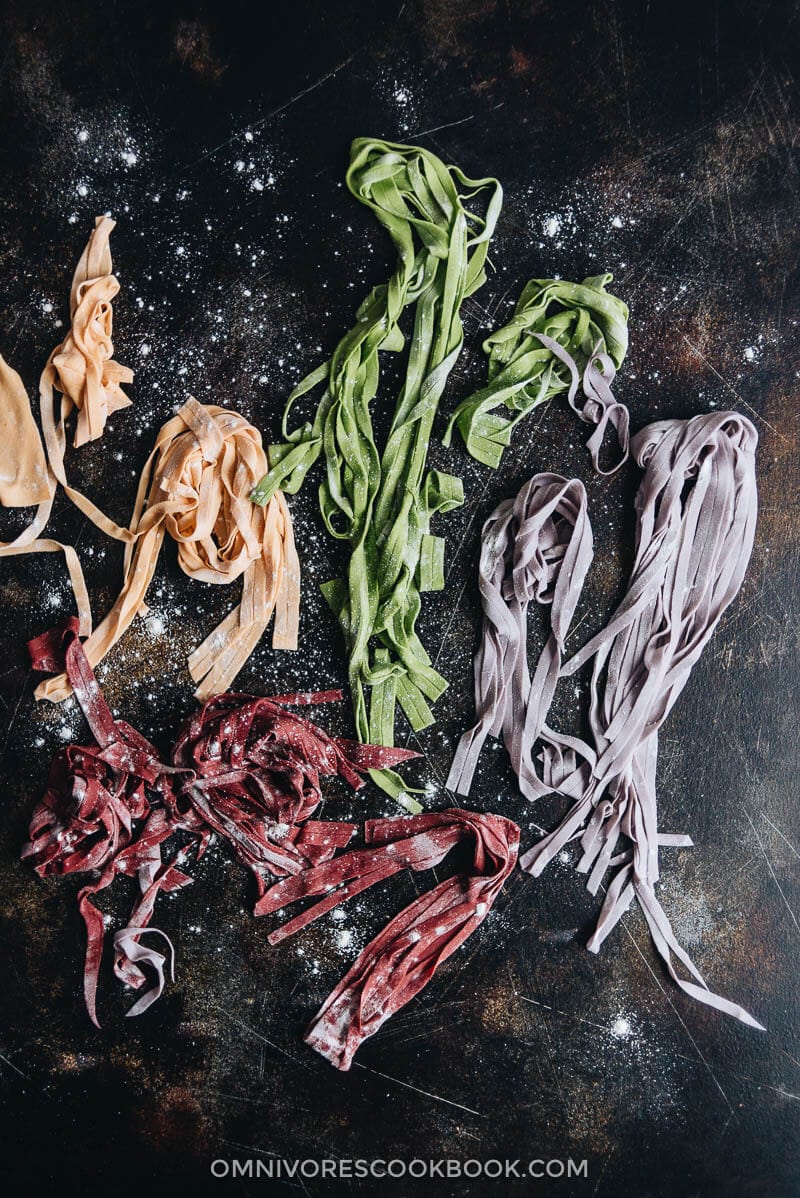
Longevity noodles are a must-have dish on the banquet table, whether you’re celebrating Chinese New Year, a birthday, a baby shower, or a wedding. There is an ancient Chinese belief that long noodles are the key to a long life.
Traditionally, these noodles are served last, when all the guests are too stuffed to walk after a multi-course feast that is as prominent as a Thanksgiving dinner. And the noodles are like the pumpkin pie dessert—you know you’re too full to eat it, but feel that the occasion would be incomplete without eating some of it. That’s why these noodles are more of a symbolic dish and are usually served in small portions with extremely simple broth.
For the upcoming Chinese New Year party, I developed this recipe to highlight our celebration. The recipe was inspired by my grandma’s rainbow dumpling wrappers, which she made once or twice a year for special occasions.
These noodle doughs are made with all-natural vegetarian ingredients—the red dough is made with beets, the orange with carrots, the green with spinach, and the purple with red cabbage. The cooked noodles are served in a flavorful clear broth, just like we serve longevity noodles in China. They are so hearty and delicious!
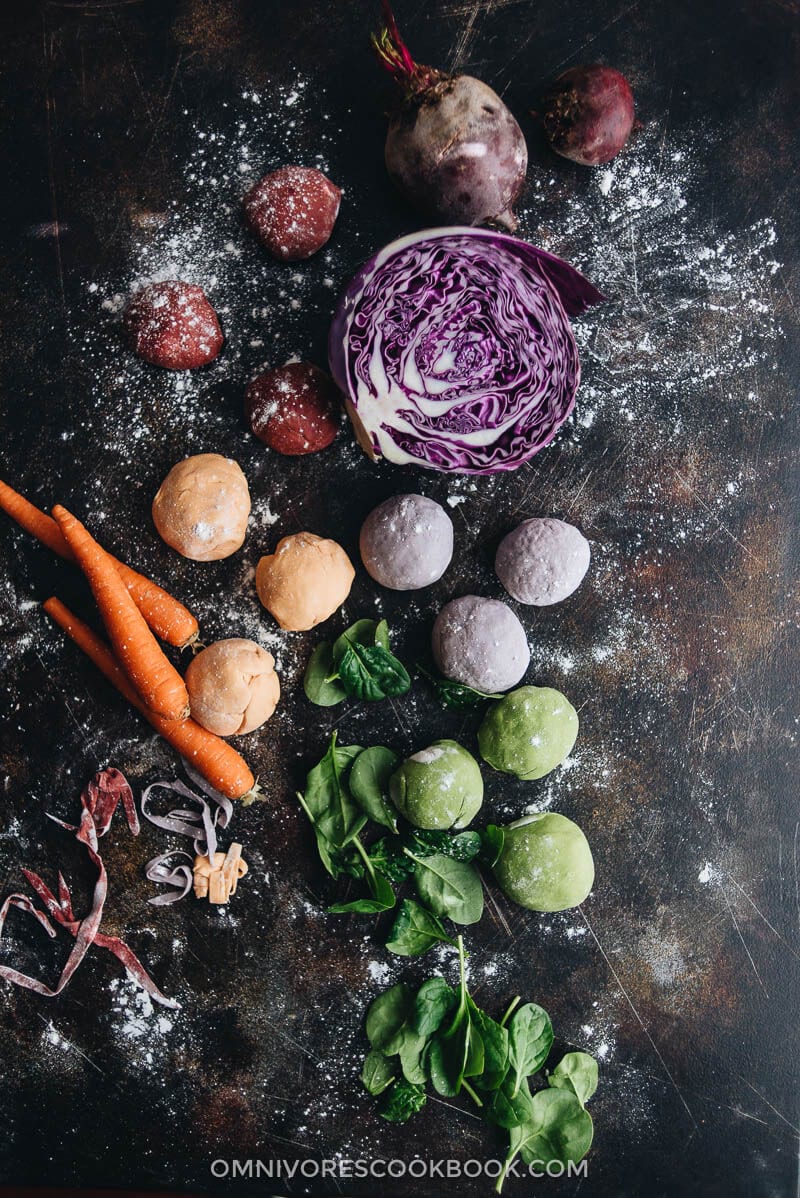
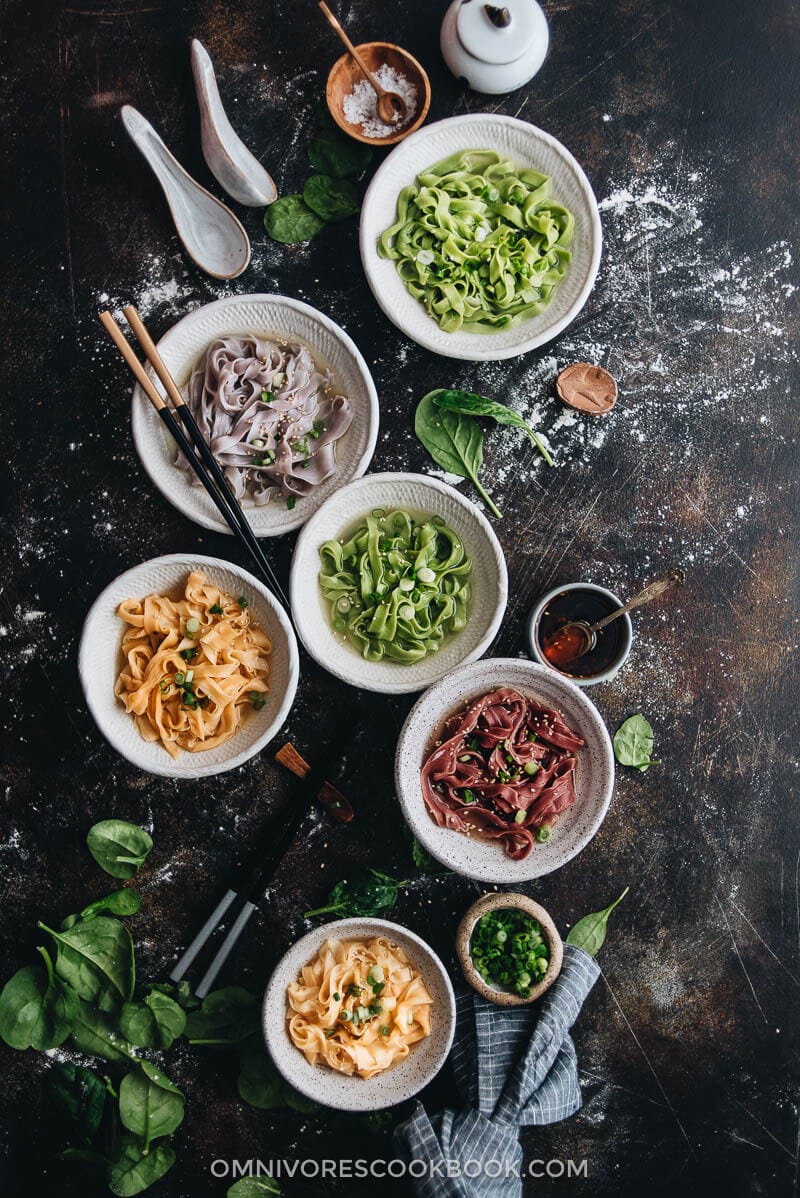
Why this recipe
Making rainbow longevity noodles might look like a huge project that takes forever to finish. However, you’d be surprised at how fun and easy they are to make in your own kitchen.
1. Easy process
In this recipe, I used my Vitamix (Ascent Series blender) to blend the vegetables to make the dyeing liquid. Then I made the dough in the same blender. The dough-making became so easy that I could get it done in 2 minutes.
Traditionally, you need to press the colored juice out of the blended vegetables. However, I found that the Vitamix does such an amazing job pureeing the veggies into a fine paste, that I didn’t need to strain the juice.
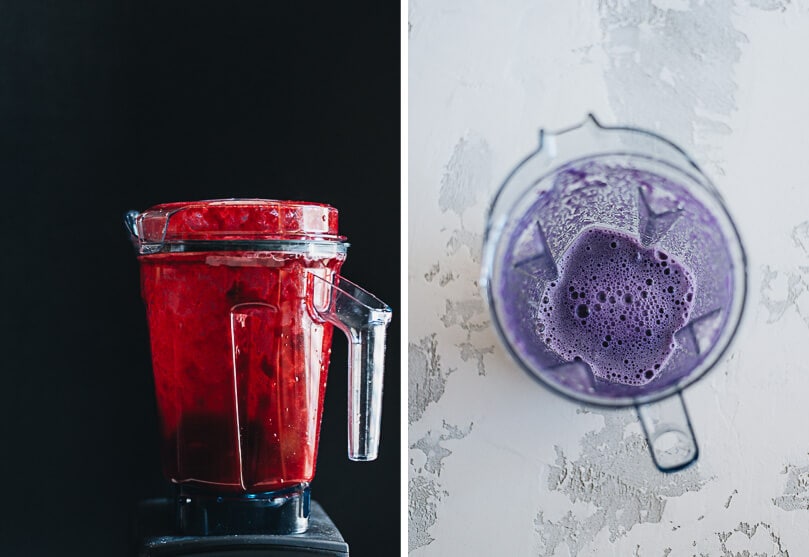
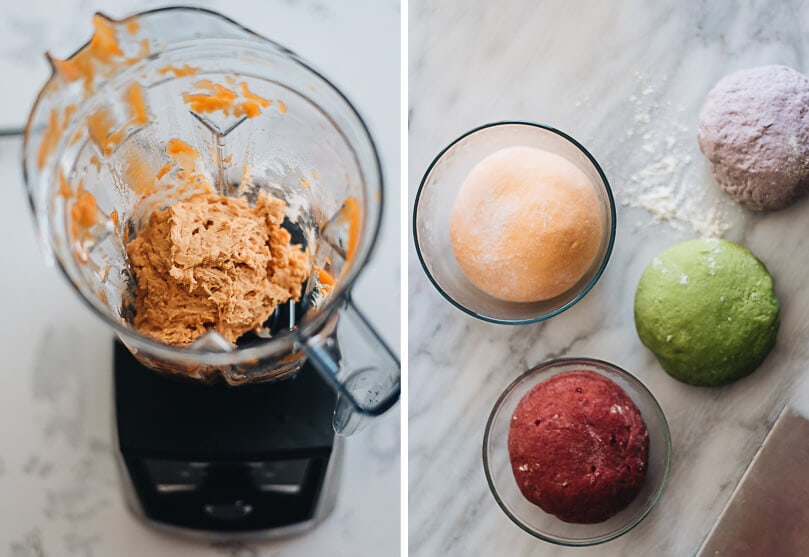
2. Easy clean-up
One of the biggest headaches of making noodle dough in a blender or food processor is that it takes forever to clean the container. Not to mention, we have four colored doughs to make! That’s where the Vitamix blade scraper really comes in handy. I simply soak the container with warm water between each color, then use the blade scraper to clean up the dough bits stuck to the blender walls and under the blade. It makes the clean-up process so much easier.
3. Eye candy with great taste
These noodles are pretty, aren’t they? Not only will your guests like the look of the dish, but they will like the taste even better because nothing compares to freshly made noodles.
These noodles have a chewy texture with the natural fragrance of the wheat. I served it in a clear chicken broth drizzled with soy sauce and homemade chili oil. Oh my, it tasted heavenly!
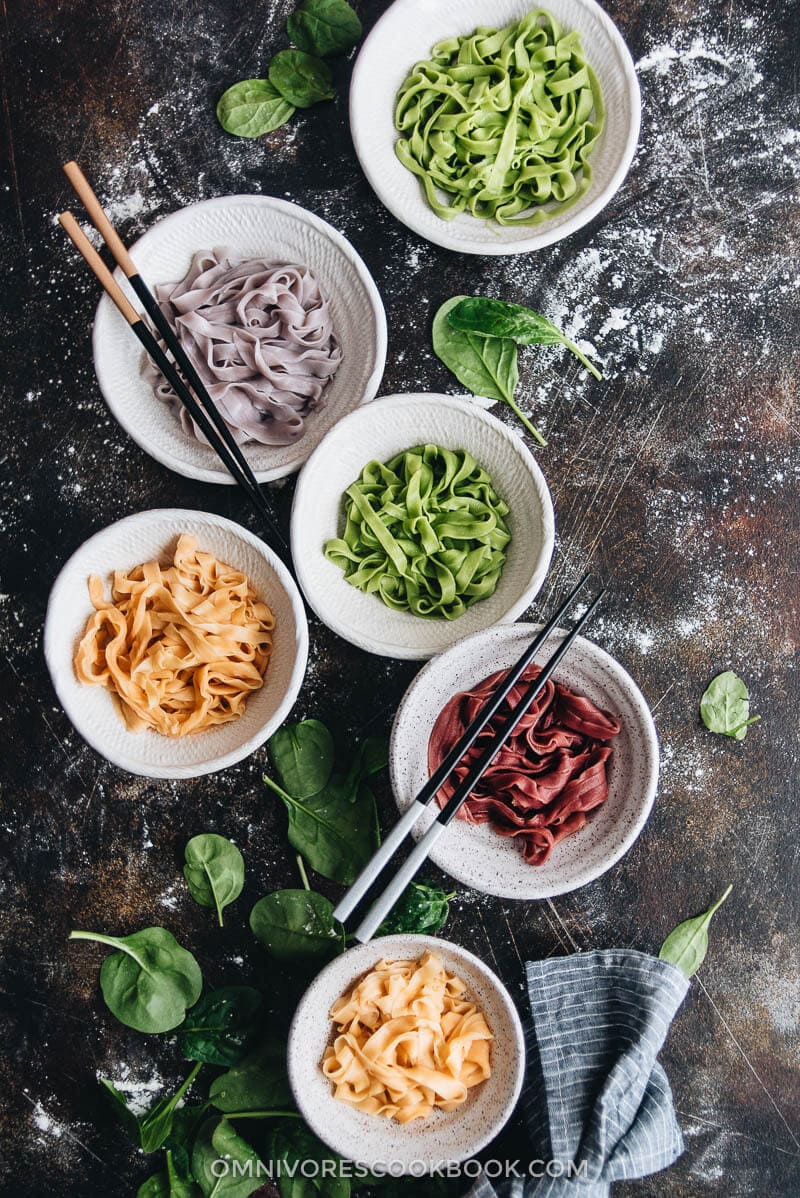
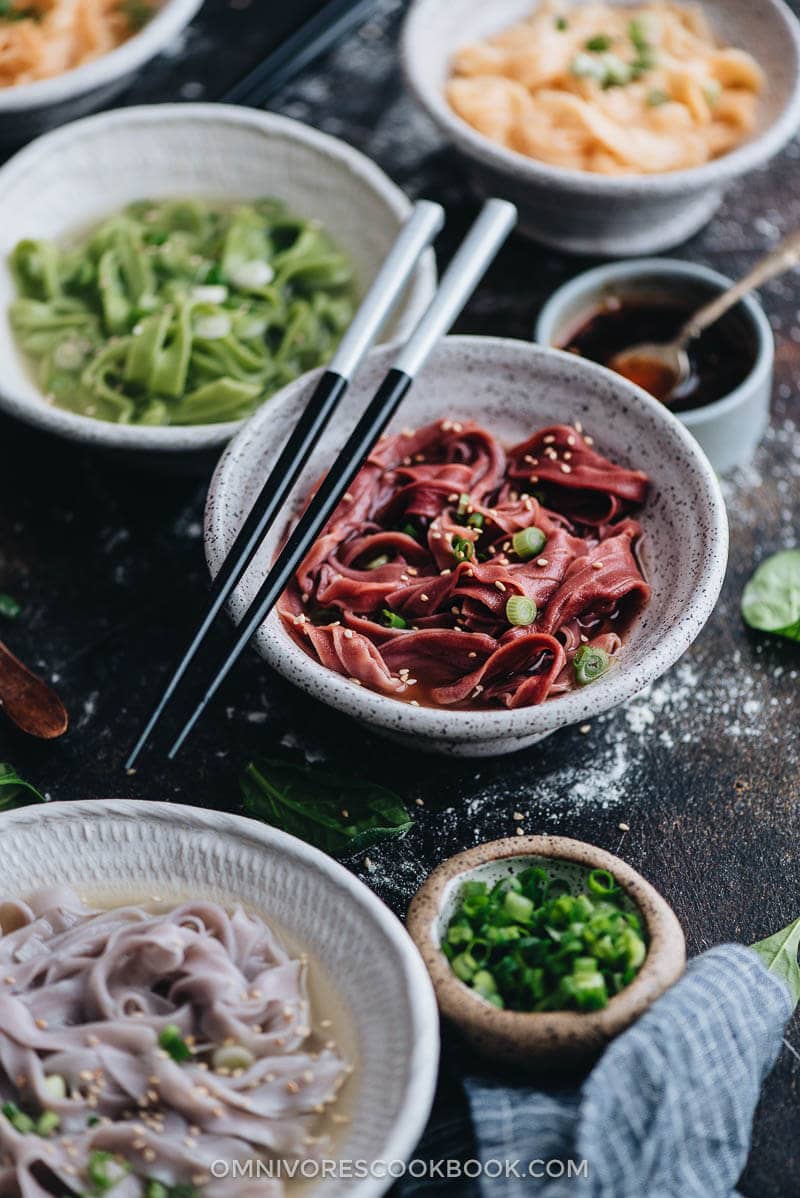
Of course, if you’d like to serve the noodles with a more complex sauce, go for it! Check out this post for more noodle sauce ideas.
I posted a picture to my Instagram story right after I tested this recipe, and I immediately got more than five requests to serve these noodles at our upcoming Chinese New Year party. I took that as a sign of a successful experiment. 🙂
Happy cooking and I hope you enjoy these noodles as much as I do!
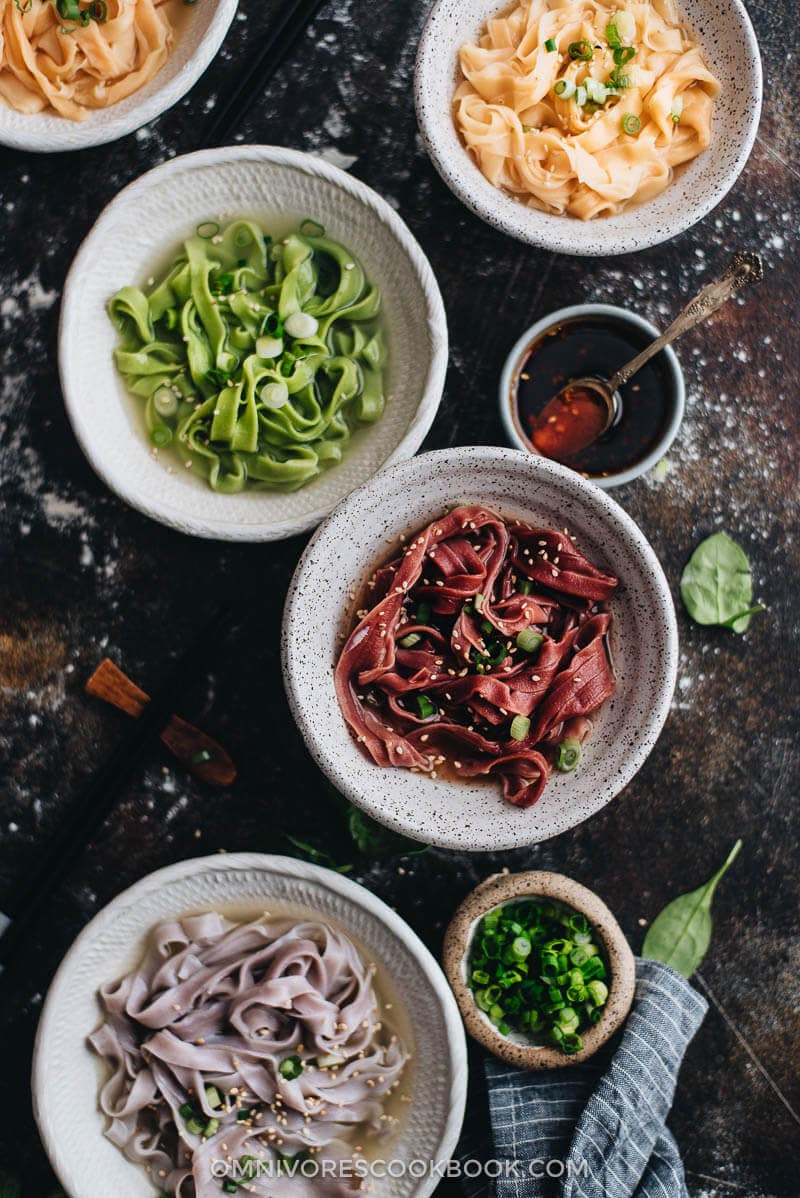
If you give this recipe a try, let us know! Leave a comment, rate it (once you’ve tried it), and take a picture and tag it @omnivorescookbook on Instagram! I’d love to see what you come up with.
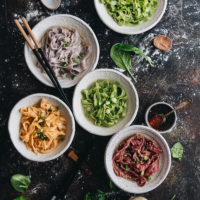
Rainbow Longevity Noodles for Chinese New Year (彩虹长寿面)
Equipment
- Vitamix
Ingredients
Noodles
- 10 oz. (300 g) all-purpose flour for each color (about 2 cups), and more for dusting
- 1/2 teaspoon salt for each color
Spinach dye
- 80 grams baby spinach , about 4 cups after pressing down
Carrot dye
- 10 oz. (300 g) carrots , peeled and coarsely chopped (about 4 small ones)
Beet dye
- 10 oz. (300 g) beets (about 2 to 3 small ones), peeled and cut into 2/3-inch (2-cm) chunks
Purple dye
- 5 oz. (150 g) purple cabbage , coarsely chopped (yields about 2 cups)
Broth (for each color)
- 6 cups broth , chicken or vegetable
- 8 teaspoons soy sauce (or to taste)
Garnish (Optional)
- sesame oil
- chili oil
- green onions , coarsely chopped
- sesame seeds
Instructions
Spinach dye
- Add baby spinach and 1 cup water into a blender (I used my Vitamix). Turn on blender and gradually increase to the highest speed. Blend until the spinach is completely broken down. Transfer to a bowl.
- Once you finish this step, jump to the noodle-making process to make the dough.
Carrot dye
- Bring a small pot of water to a boil. Blanch carrots until tender, 5 to 8 minutes. Drain and rinse with cold water to cool. When the carrots have cooled enough to handle, transfer them to the blender with 1 cup water. Turn on blender and gradually increase to the highest speed. Blend until it forms a smooth paste. Transfer to a bowl.
- Once you finish this step, jump to the noodle-making process to make the dough.
Beet dye
- Bring a small pot of water to a boil. Blanch beets until tender, about 5 minutes. Drain and rinse with cold water to cool. When the beets have cooled enough to handle, transfer them to the blender with 1 cup water. Turn on blender and gradually increase to the highest speed. Blend until it forms a smooth paste. Transfer to a bowl.
- Once you finish this step, jump to the noodle-making process to make the dough.
Purple dye
- Add red cabbage and 1 cup water into the blender. Turn on blender and gradually increase to the highest speed. Blend until the cabbage is completely broken down. Transfer to a bowl.
Noodle dough
- Add the flour and salt into a high-powered blender or food processor with 2/3 cup of dye liquid.
- Pulse until it starts to form a dough ball and lift off the blades, about 30 seconds. Add more dye liquid if the dough does not come together, 1 tablespoon at a time. Add a little more flour if the dough looks too moist. Pulse for another 20 to 30 seconds. Dust a thin layer of flour onto your working surface. Transfer the dough onto it and knead for 2 to 3 minutes. Transfer the dough to a bowl and cover with plastic wrap. Let rest for 30 minutes.
- Clean your blender (or food processor) before proceeding to the next color.
Noodles
- Once you've made all the doughs, start making the noodles. At this stage you can cover the doughs with plastic wrap and store them in the fridge for a day, or freeze them for a month. Thaw completely before making noodles.
- Divide each dough into four even pieces, shaping the four pieces into dough balls. Work on one piece at a time, returning the remaining doughs to the bowl and covering them.
- Run the dough through a pasta rolling machine, starting on the widest setting and slowly working your way down to the desired thickness. My pasta machine has 10 settings. I usually use 6 for super thin noodles or 4 for more chewy noodles. Use the fettuccine attachment to cut the pasta into wide noodles or the spaghetti attachment for thinner noodles. Dust the noodles with extra flour to prevent sticking. Hang the noodles on a drying rack or a floured surface while working on the rest of the dough. If you do not have a pasta machine check out my Fresh Homemade Noodles recipe for instructions on how to roll and cut your noodles by hand (https://omnivorescookbook.com/fresh-homemade-noodles).
Cook and serve
- Heat chicken or vegetable broth in a pot until boiling. You should prepare 6 to 8 cups of broth for each color.
- Bring a large pot of water to a boil over medium-high heat. Only cook the portion of noodles you're about to serve.
- Add noodles, one color (or 3 to 4 servings) at a time, and immediately stir with chopsticks (or tongs) to separate the noodles. Boil until the noodles are cooked through, about 1 minute for thin noodles or up to 3 minutes for thicker noodles.
- Use tongs to transfer the noodles to a strainer. Flush with tap water to cool. Drain and transfer to serving bowls.
- Add the broth to each noodle bowl, add 1 to 2 teaspoons soy sauce. Garnish with a few drops of sesame oil (or homemade chili oil), chopped green onion, and sesame seeds, if using.
- Serve immediately.
Store
- Dust the bottom of an airtight container with flour. Generously sprinkle flour onto the noodles. Fold the noodles into the container and cover. Store in the freezer for up to 1 month.
- To cook frozen noodles, cook them like you would cook fresh noodles, without thawing. You'll need more cooking time, about 4 to 6 minutes depending on the thickness of the noodles.
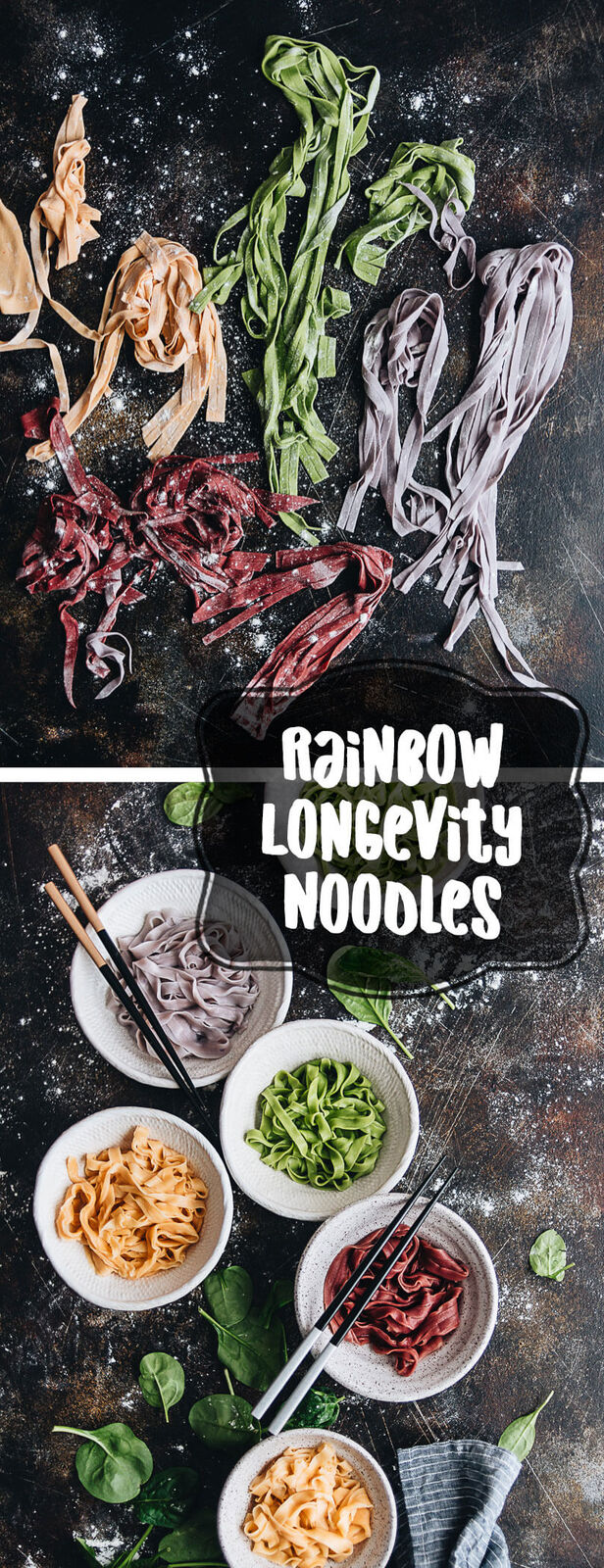

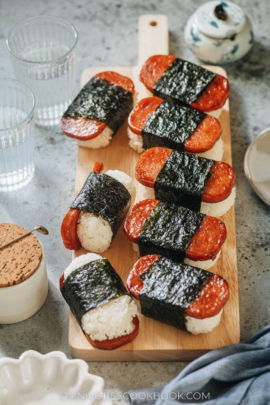
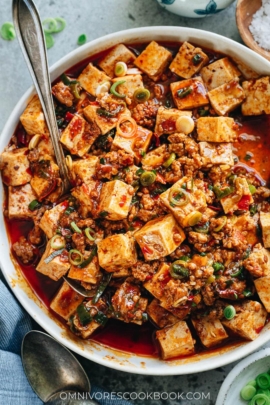

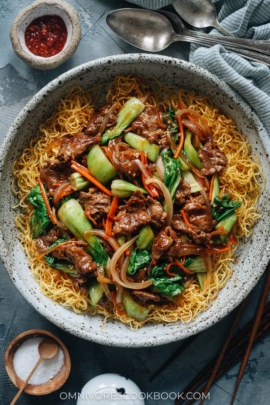
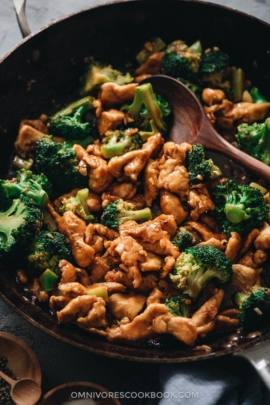
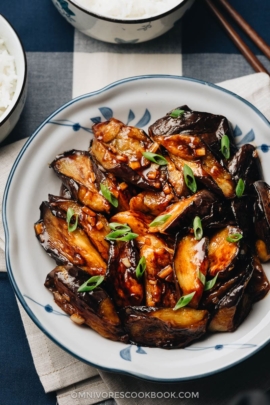






This looks so good! I love colourful food. And the greatest thing about this recipe is that no artificial colouring required at all.
Thank you Wei! Me too, I really love using natural ingredients and try to avoid chemical additives whenever I can 🙂
Have you ever thought of using all the noodles in a bowl at once. So that you have one bowl of noodles with all 4 colors in them. Would it cause the flavors to change?
Hi Dianna, actually I’ve tried serving different colors in one bowl, and it tasted great. The veggies add colors and a very mild taste, so there is no problem if you want to serve them all together.
Happy cooking and can’t wait to hear how your noodles turn out 🙂
Hi Maggie! These look beautiful. Is there any way to make this gluten free? Can you advise?